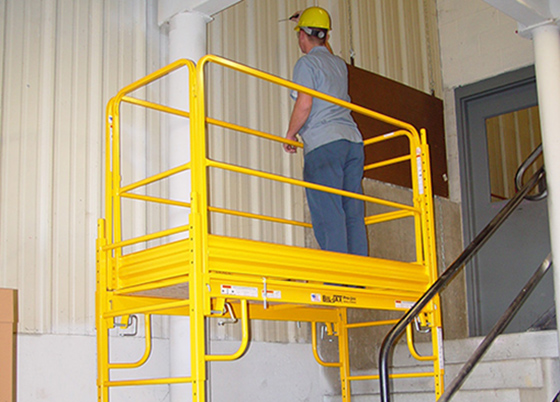Choosing the right scaffold for your project involves careful consideration of various factors to ensure safety, efficiency, and effectiveness. It’s important to understand the full scope of your project, including the height and area to be covered, and specific tasks you’ll need to perform on the scaffolding.
Ultimately, the appropriate type of scaffold depends on the specific needs of your project. Getting to know some of the most common types of scaffold, and their basic uses, will serve as a great guideline in helping you make the right decision.
Popular Bil-Jax Scaffold Options
Bil-Jax manufactures different types of scaffolding for a variety of applications. Our most popular products include:
- Frame and Brace Scaffold. Often referred to as sectional scaffolding, frame and brace scaffold is one of the most common and traditional types of scaffolding. It is used primarily in construction and maintenance projects under normal building conditions. It consists of a framework of vertical posts (frames) connected by horizontal and diagonal braces to create a stable and safe working platform for workers, tools, and materials. Frame and brace scaffold is typically used for residential projects outdoors, but will also work indoors. Bil-Jax frame and brace scaffolding can reach heights of 10–20’ and may be set up in square or rectangular configurations. A common installation measures five frames high by ten frames wide.
- Rolling Tower. A rolling tower scaffold uses the same components as sectional scaffold but is equipped with wheels or casters, allowing it to be easily moved from one location to another. When stability is required, the rolling tower may be equipped with leveling jacks for static performance. It is widely used in construction, maintenance, and various other projects where mobility and access to different work areas are essential. Rolling tower scaffolds offer the convenience of being able to reposition the scaffold without dismantling and reassembling it. The Bil-Jax rolling tower is often used for maintenance work indoors, such as airplane hangars. It is typically one frame wide and 5–6 frames tall.
- System Scaffold. System scaffolding uses standardized components to create a versatile and efficient scaffold structure. Unlike traditional scaffolding methods that involve assembling individual pipes and fittings, system scaffold utilizes pre-designed and pre-engineered modular components that can be easily interconnected to build various configurations of scaffolding. Lightweight and easy to assemble, system scaffold is typically used in outdoor industrial settings and popular in the gas and oil industry (e.g., oil rigs in the ocean). Because it can be contoured around a building more easily, Bil-Jax system scaffold is an ideal choice for applications requiring intricate architectural detail, such as rounded corners.
- Utility Scaffold. Also known as baker scaffold, utility scaffolding is a light-duty option for residential, DIY, and light commercial applications. Lightweight and easy to assemble, the basic unit measures 6’ in height and easily fits through a standard doorway. It’s intended for tasks that require a stable and safe working platform but don’t involve heavy loads or extensive heights. Utility scaffolds are often used by homeowners, hobbyists, and small contractors for various maintenance and repair projects. The Bil-Jax Pro-Jax yellow utility scaffold unit is our most popular product. Its versatility and ease of use makes it a very popular rental item.
Not sure which type of scaffolding to use for your project? The Bil-Jax experts can help! Contact us today for more information.

